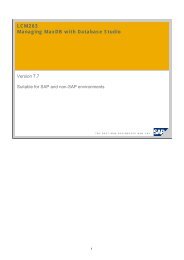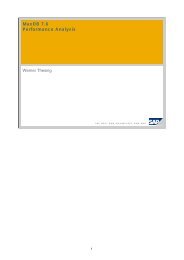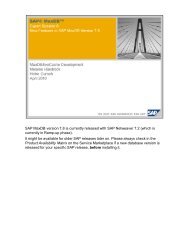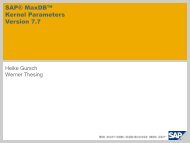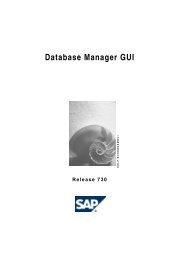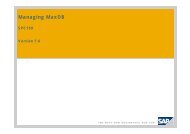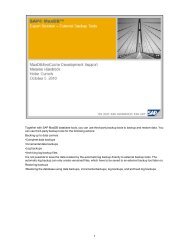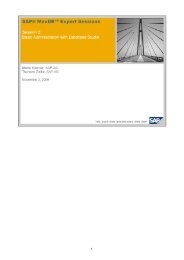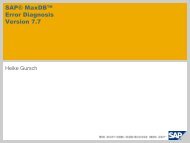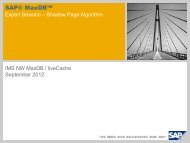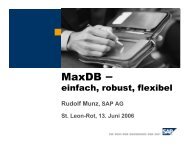Script (.pdf file, 8 MB) - SAP MaxDB
Script (.pdf file, 8 MB) - SAP MaxDB
Script (.pdf file, 8 MB) - SAP MaxDB
You also want an ePaper? Increase the reach of your titles
YUMPU automatically turns print PDFs into web optimized ePapers that Google loves.
Activate automatic log backup to protect the database against LOG FULL situations.<br />
When the number of entries written to the log equals the value of the "AutoLogBackupSize"<br />
parameter, this data is written to the defined backup template and the log area is released for<br />
overwriting. The log area is not deleted by being overwritten with dummy data.<br />
Each log area is stored in a separate backup <strong>file</strong> to which a version number is assigned.<br />
It is only possible to perform automatic log backups to backup <strong>file</strong>s. In turn, these must be<br />
backed up to tapes or backup servers with the relevant tools.<br />
The automatic log backup can also be used alongside script-controlled log backups as a<br />
safety net in case the script fails.<br />
Automatic log backup must be deactivated whenever a script-controlled log backup is<br />
performed (for example, with the dbmcli –U c autolog_off command).<br />
The longer the duration of data backup actions performed with the utility task, the more<br />
important automatic log backups become, since the utility task cannot be used for other<br />
purposes during this time, which means that you cannot start any interactive log backups. For<br />
example, if data backups take a long time in online mode because backup media are slow, it<br />
is possible that online activities carried out during this backup could cause the log area to<br />
become full. If automatic log backup is activated, the log area can still be backed up when the<br />
utility task is occupied, thereby preventing a LOG_FULL situation.




